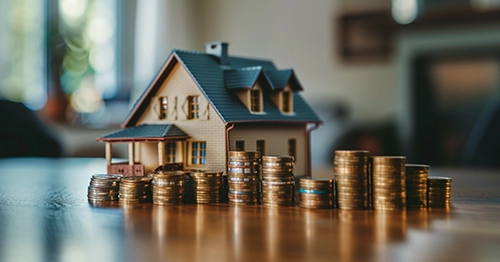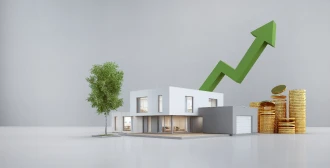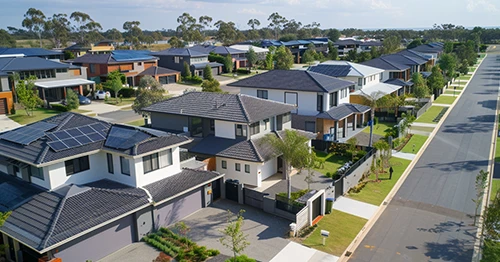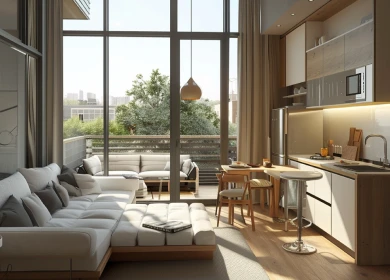Updated: 29 May, 2025
Table of Contents
- How much can I borrow?
- Why are the banks so conservative?
- How popular are eco-friendly homes?
- What are some unconventional materials?
- What are unconventional homes?
- What is a log cabin?
- What is rammed earth construction?
- What is a mudbrick home?
- What is a strawbale home?
- What is a dugout home?
- How can we help?
Are you concerned about protecting the earth and conserving energy?
Why not purchase an eco-friendly home with unconventional building materials?
Did you know you can borrow up to 80% LVR to pay for your ecologically-friendly home?
Read on to find out how we can help you.
How much can I borrow?
Whilst it may make sense to save on energy and protect the environment through buying a house that’s made of mudbrick or straw bale, lenders often see these types of properties as being difficult to sell.
Unconventional property types do not have the mass appeal of more traditional home types. As such, the lenders can offer 80% LVR maximum on a readily saleable property.
Our expert mortgage brokers can help you get the loan for your unconventional home of your dreams! Please call us on 1300 889 743 or enquire online today!
Why are the banks so conservative?
These properties do not appeal to every buyer and they can take longer to sell than conventional houses. The market for eco-friendly homes is still very limited and these types of homes still are seen as a novelty.
This means they are a higher risk when it comes to selling and hence banks generally do not lend over 80% LVR.
How popular are eco-friendly homes?
While the unconventional homes are environmentally friendly and are good for saving energy, they do not appeal to every buyer.
As such, their market is limited and most banks will not accept them as security for a home loan.
Read on to find out about how we can help to get you approved to purchase an unconventional home of your choice.
What are some unconventional materials?
The homes with unconventional building materials are basically houses that are not built using brick, weatherboard or fibrous cement.
For home building materials to be considered eco-friendly, certain criteria must exist.
Most importantly, the building material must be produced in a way that doesn’t pollute the earth or use waste energy.
The material must be readily available and sustainable. For example, timber is a sustainable material as long as the trees being cut are being planted back in a managed forest.
Insulation is another important factor to consider. More insulation provided by your building material means less energy has to be wasted on heating and cooling of your home.
Longevity is a key factor in choosing a building material, as the longer-lasting the material, the better it is for the environment. Also, you would want your home to have longevity to make it a better investment.
What are unconventional homes?
Below are some of the most popular types of unconventional homes that are environmentally friendly:
- Log Cabins
- Rammed Earth Construction
- Mudbrick Homes
- Strawbale Homes
- Dugouts
What is a log cabin?
Log cabins are made of timber. Wood, like strawbale is a renewable material. Because wood is organic and natural it’s completely environmentally-friendly.
The main things to look for in wood material is that the wood comes from a sustainable plantation and not from an old forest or endangered tree types.
What is rammed earth construction?
Rammed earth is composed of a mix of sand, silt, gravel and clay and is made by compressing this mixture between two flat panels.
For added protection coating with breathable sealant is recommended.
Rammed earth, like mud brick, requires little energy to produce and also like mudbrick buildings, is a labour intensive method.
What is a mudbrick home?
Mud brick is the oldest used construction material and is made from all natural ingredients straight from the earth. The process to make mud bricks uses only energy from the sun so there’s no harm to earth in the making of mud bricks.
Mud bricks are made by mixing clay earth with water and adding straw to prevent the bricks from cracking.
The mud is then dried in the sun and then to protect the mud bricks from getting ruined by rain they are treated with linseed oil or turpentine.
Mudbrick is very durable and with proper maintenance, mudbrick homes can stand centuries.
Our expert mortgage brokers can help you get the loan for a mudbrick home.
Please call us on 1300 889 743 or enquire online today!
What is a strawbale home?
Strawbale blocks are made of straw, mud and wire. Making of strawbale blocks is labour intensive.
Straw is held together by mud and wire and is compressed into blocks. Walls made of strawbale blocks are then covered by a smooth layer of cement or earth to strengthen the wall.
Strawbale provides the best insulation out of mudbrick, timber and rammed earth. Strawbale, being a good insulator saves on energy costs by keeping your home cool in the summer and warm in the winter.
What is a dugout home?
The Outback is a very dry and hot desert where one could not possibly stand the heat under the desert sun in a conventional home. In order to stand the tough living conditions and to avoid the damaging desert sun, the desert dwellings are dug underground.
There are some dugout homes that used to be abandoned mines. In all cases a dugout is a unique type of a home that can be a rewarding investment for someone with a slightly different mindset.
How can we help?
Do you have a desire to own a dugout, a strawbale home, a mudbrick home, a log cabin or a rammed earth construction? Please contact us and we can arrange a home loan for you.
We know which lenders will consider financing an unusual home. We are the experts in getting you the mortgage for your unconventional home.
Please call us on 1300 889 743 or enquire online and let us help you get approval!





